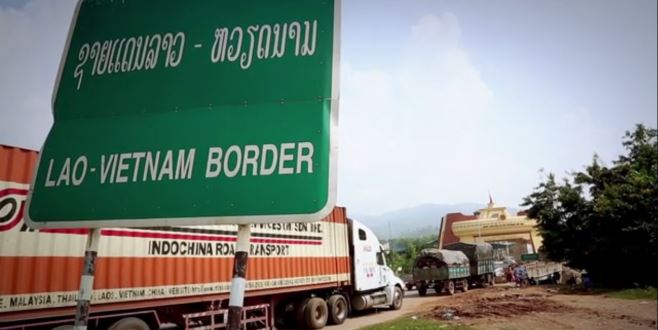The Lao People’s Democratic Republic (Lao PDR) is a landlocked country, bordered by Myanmar, Thailand, Viet Nam, Cambodia and Yunnan Province in PRC. This context makes Lao PDR largely dependent on the GMS countries for its trade. Lao PDR’s geography is made up of forested areas and rugged mountains, plains and plateaus. Eighty per cent of the population practices subsistence farming and this makes up half of its GDP. The country is rich in mineral resources, having substantial deposits of coal, gold, bauxite, tin and copper. There has been rapid growth in Lao PDR’s international tourism industry, with visitors coming to see the country’s untouched natural beauty.
Transport in Lao PDR is predominantly by road, with roads carrying up to 70 per cent of the freight and 90 per cent of the passenger traffic. However, the country has a low road network density, due to its sparse population. Lao PDR has about 35,600km of road network, with 22 per cent being national roads, 28 per cent provincial roads, 4 per cent urban roads and 46 per cent district or community roads. Only 14 per cent of these roads are paved, with the remainder having gravel or earth surfaces. Most of the road network is in poor condition, with a large proportion being impassable at times during the wet season. Due to these challenges, the availability of transport services is uneven across the provinces.
Road links between Vientiane and the provincial capitals have been improved, particularly Route 13, and the provincial road network linking the 18 provincial capitals with all-weather roads is near completion. With the mature status of the national network, the future focus would be on maintenance and planning for further investment for improvement.
Source: Asian Development Bank, Lao People’s Democratic Republic Transport Sector Assessment, Strategy, and Road Map, November 2011.
Lao PDR trade demand and key transport routes
An assessment of trade in Lao PDR suggests that the key route is the Central Corridor western link between Vientiane and Bangkok (AH12), with much lower volumes on the same corridor going north to the Chinese border. The North-East Corridor, the East-West Corridor, and the Central Corridor east and south of Vientiane are likely to be handling small volumes of trade in comparison. Route 12 between That Hek–Ha Tinh in Viet Nam could be a growing trade corridor, but it is still minor when compared to the Central Corridor.
Source: Transport and Logistics in the Greater Mekong Subregion, Technical Assistance Consultant’s Report [Final Report] 2012 [Link to Resources]
CBTA in Lao PDR
Lao PDR ratified the main CBTA agreement in 1999 and has fully ratified the 20 Annexes and Protocols. Since then, the Government has begun implementation of CBTA at its priority border crossing points. A Single-Stop Inspection Procedure agreement between Lao PDR and Viet Nam has helped simplify border inspection procedures. The practice means that there is only one inspection by Customs officials from both sides of the border at the same time. With the completion of the Common Control Area (CCA) at the Lao-Bao–Dansavan border crossing point in the East-West Economic Corridor (EWEC), clearance time has been significantly shortened.
With the completion of key physical infrastructure along the EWEC, and in order to fully utilize the corridor, there was a push to further extend it to key GMS hubs. Lao PDR jointly signed an MOU with Viet Nam and Thailand on the Extension of the Operational Route of the EWEC to include GMS capitals (Hanoi, Bangkok and Vientiane) and deep-sea ports (Laem Chabang and Haiphong).
Operations Manuals were developed as a tool for drivers and transport operators, which includes documents on bilateral transport, relevant laws and regulations, a sample of transport permits, procedures for applying for permits, tax and duties, road safety, road signals, and detailed local road maps indicating gas stations and rest areas.
Lao PDR and PRC (Yunnan Province) jointly agreed to increase the number of bus and truck quotas between the two countries. During an ADB-supported bilateral meeting in Yunnan Province, both agreed to increase their quotas by 50 per cent for busses (up to 20,000) and 25 per cent (up to 20,000) for trucks beginning in 2013.
Future plans for Lao PDR in GMS transport facilitation include the signing and implementation of the PRC-Lao PDR-Thailand trilateral MOU on the Exchange of Traffic Rights at the Houayxay–Chiangkong and the Bavet–Moc-Bai border crossing points covering the Kunming–Bangkok route. This would further stimulate trade with Thailand and PRC, as well as help decrease transportation costs and transport time on along the North-South Corridor.
Lao Ministry of Public Works and Transport:
http://www.mpwt.gov.la/en/



